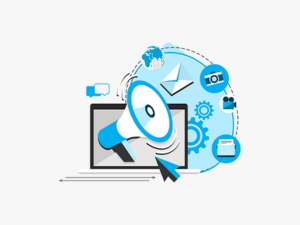 Small and medium-sized businesses (SMBs) in the United States face numerous challenges including navigating complex regulations and managing various risks. From data breaches to compliance with ever-evolving laws, SMBs must be vigilant and proactive to protect their assets and maintain customer trust. Leveraging technology can play a critical role in enhancing risk management and ensuring compliance. This blog post explores the importance of risk management and compliance for US-based SMBs and discusses how technology upgrades can streamline these processes.
Small and medium-sized businesses (SMBs) in the United States face numerous challenges including navigating complex regulations and managing various risks. From data breaches to compliance with ever-evolving laws, SMBs must be vigilant and proactive to protect their assets and maintain customer trust. Leveraging technology can play a critical role in enhancing risk management and ensuring compliance. This blog post explores the importance of risk management and compliance for US-based SMBs and discusses how technology upgrades can streamline these processes.
Top FAQ Questions About Risk Management and Compliance:
-
How can small and medium businesses in the US enhance risk management and compliance with technology?
-
What are the key benefits of using technology upgrades for managing risk and ensuring compliance?
Understanding the Importance of Risk Management and Compliance
Risk management and compliance are essential components of a successful business strategy, especially for SMBs. Effective risk management helps businesses identify, assess, and mitigate potential threats, while compliance ensures that they adhere to relevant laws and regulations.
The Challenges of Managing Risks for SMBs
For SMBs, managing risks can be particularly challenging due to limited resources and expertise. Common risks include cybersecurity threats, financial uncertainties, legal liabilities, and operational disruptions. Without a robust risk management strategy, these risks can lead to significant financial losses, reputational damage, and even business closure.
The Role of Compliance in Business Success
Compliance is equally crucial for SMBs. Failing to comply with regulations can result in hefty fines, legal penalties, and loss of business licenses. Moreover, compliance demonstrates a commitment to ethical practices and helps build trust with customers, partners, and stakeholders.
Leveraging Technology for Effective Risk Management
Technology has revolutionized the way businesses manage risks. By adopting the right tools and solutions, SMBs can automate risk management processes, improve accuracy, and reduce manual efforts. Here are some key ways technology can enhance risk management for US-based SMBs:
Implementing Advanced Cybersecurity Measures
Cybersecurity is a top concern for SMBs, as cyberattacks can have devastating consequences. Technology solutions like firewalls, encryption, intrusion detection systems, and multi-factor authentication help protect sensitive data from unauthorized access and breaches.
Utilizing Artificial Intelligence and Machine Learning
AI and machine learning can detect anomalies and potential threats in real time, allowing businesses to respond promptly to cyber threats. These technologies continuously learn from data patterns, improving their ability to identify new threats and reduce false positives.
Conducting Regular Security Audits
Technology tools can automate security audits, making it easier for SMBs to identify vulnerabilities and ensure compliance with cybersecurity regulations. Regular audits help businesses stay ahead of potential threats and maintain a strong security posture.
Automating Risk Assessment and Monitoring
Traditional risk assessment methods are often time-consuming and prone to errors. Technology solutions can automate risk assessment and monitoring, providing real-time insights into potential risks.
 Using Risk Management Software
Using Risk Management Software
Risk management software allows SMBs to identify, assess, and prioritize risks in a structured manner. These tools offer features like risk scoring, heat maps, and dashboards that provide a comprehensive view of the risk landscape.
Integrating IoT Devices for Real-Time Monitoring
Internet of Things (IoT) devices can monitor various aspects of a business, such as equipment performance, environmental conditions, and supply chain activities. By collecting real-time data, IoT devices help businesses detect potential risks early and take corrective actions promptly.
Streamlining Compliance with Technology Upgrades
Compliance management can be complex and burdensome for SMBs, especially with constantly changing regulations. Technology upgrades can simplify compliance processes, reduce the risk of non-compliance, and ensure that businesses meet regulatory requirements.
Utilizing Compliance Management Software
Compliance management software helps SMBs manage regulatory requirements efficiently. These tools provide centralized platforms for tracking compliance tasks, maintaining documentation, and conducting audits.
Automating Documentation and Reporting
Compliance management software can automate the creation and storage of necessary documents, reducing manual efforts and minimizing errors. Automated reporting features help businesses generate accurate compliance reports, ensuring they are prepared for audits and inspections.
Keeping Up with Regulatory Changes
Staying up to date with regulatory changes is crucial for compliance. Compliance management software often includes features that notify businesses of updates to laws and regulations, helping them remain compliant without needing to manually monitor changes.
Enhancing Data Privacy and Protection
Data privacy is a significant concern for SMBs, especially with regulations like the General Data Protection Regulation (GDPR) and the California Consumer Privacy Act (CCPA). Technology upgrades can help businesses protect customer data and comply with privacy regulations.
Implementing Data Encryption and Access Controls
Data encryption ensures that sensitive information is protected from unauthorized access. Access controls limit who can view or edit data, reducing the risk of data breaches. These measures are essential for complying with data privacy regulations and protecting customer information.
Conducting Regular Data Privacy Audits
Technology tools can automate data privacy audits, helping businesses identify potential vulnerabilities and ensure compliance with privacy regulations. Regular audits also demonstrate a commitment to data protection, building trust with customers and partners.
The Benefits of Technology Upgrades for Risk Management and Compliance
Adopting technology upgrades for risk management and compliance offers numerous benefits for SMBs, including:
Increased Efficiency and Productivity
Automating risk management and compliance processes reduces manual efforts, allowing employees to focus on more strategic tasks. This leads to increased efficiency and productivity, enabling businesses to achieve their goals more effectively.
Improved Accuracy and Reduced Errors
Technology solutions minimize the risk of human error, ensuring that risk assessments, compliance documentation, and reports are accurate and reliable. This reduces the likelihood of non-compliance and the associated penalties.
 Enhanced Decision-Making
Enhanced Decision-Making
Technology provides real-time data and insights, enabling businesses to make informed decisions about risk management and compliance. Access to accurate information helps businesses respond quickly to potential threats and adapt to changing regulations.
Cost Savings
While investing in technology may require an upfront cost, the long-term savings can be significant. Automating risk management and compliance processes reduces the need for manual labor, lowers the risk of costly errors, and helps avoid fines and penalties for non-compliance.
Better Customer Trust and Loyalty
By demonstrating a commitment to risk management and compliance, businesses can build trust with customers, partners, and stakeholders. This trust is crucial for retaining customers and building long-term relationships, ultimately contributing to business growth.
How SMBs Can Get Started with Technology Upgrades
For SMBs looking to enhance their risk management and compliance efforts through technology, here are some steps to get started:
Assess Your Current Risk Management and Compliance Processes
Begin by evaluating your existing risk management and compliance processes to identify areas for improvement. This assessment will help you understand the gaps and determine the types of technology solutions that would be most beneficial for your business.
Research and Select the Right Technology Solutions
There are many technology solutions available for risk management and compliance, ranging from cybersecurity tools to compliance management software. Research different options and choose solutions that align with your business needs, budget, and goals.
Implement Technology Upgrades Gradually
Implementing technology upgrades can be a significant undertaking. Start with small, manageable changes and gradually scale up as you become more comfortable with the new tools and processes. This approach helps minimize disruptions and ensures a smooth transition.
Train Employees and Build a Risk-Aware Culture
Ensure that employees are trained on the new technology solutions and understand their role in risk management and compliance. Building a risk-aware culture is essential for the success of your efforts, as it encourages employees to proactively identify and address potential risks.
Monitor and Adjust Your Strategy
Risk management and compliance are ongoing processes. Regularly monitor your technology solutions and assess their effectiveness. Be prepared to adjust your strategy as needed to stay ahead of emerging risks and regulatory changes.
Let's Recap: Embracing Technology for a Safer, Compliant Future
In conclusion, technology plays a vital role in helping US-based SMBs manage risks and ensure compliance. By adopting technology upgrades, businesses can streamline processes, reduce errors, enhance decision-making, and build trust with customers. As the business landscape continues to evolve, staying proactive and embracing technology will be key to navigating the challenges of risk management and compliance successfully.
If you're ready to explore technology solutions for risk management and compliance, contact us today. Our team of experts can help you develop a customized strategy to protect your business and ensure compliance with all relevant regulations.
FAQs Answered
1. How can small and medium businesses in the US enhance risk management and compliance with technology?
SMBs can enhance risk management and compliance by implementing technology solutions such as cybersecurity tools, compliance management software, and data privacy measures. These tools help automate processes, improve accuracy, and provide real-time insights into potential risks and regulatory requirements.2. What are the key benefits of using technology upgrades for managing risk and ensuring compliance?
The key benefits include increased efficiency and productivity, improved accuracy, cost savings, better decision-making, and enhanced customer trust and loyalty. Technology upgrades help SMBs streamline risk management and compliance processes, reducing the risk of errors and non-compliance.
